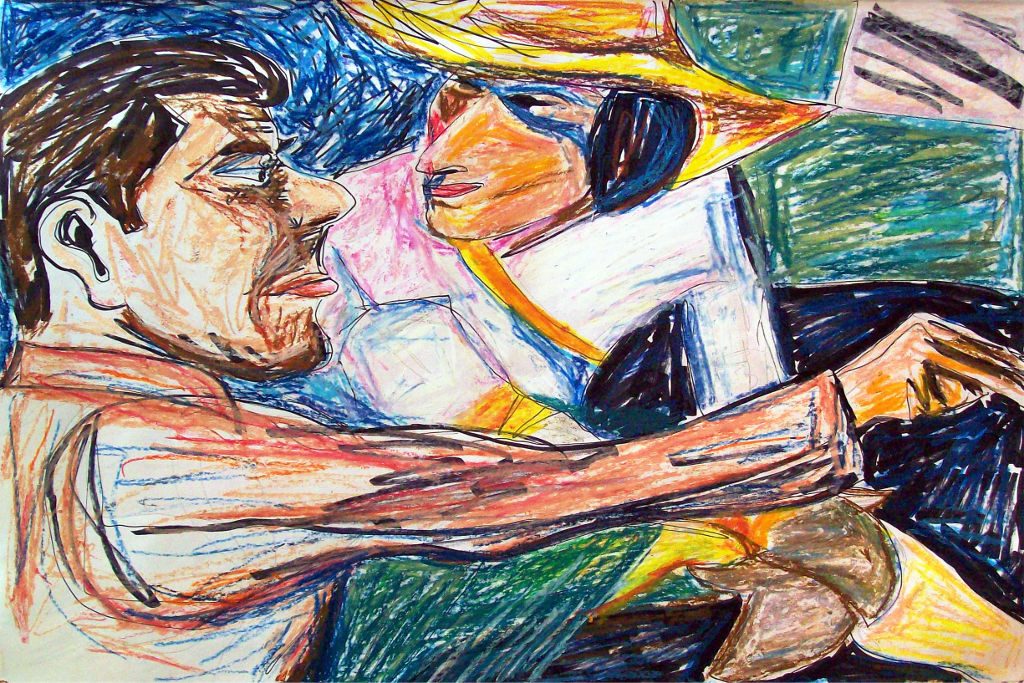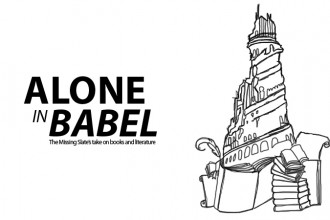A look at violence against bisexuals
By Aaron Grierson
Bisexuality, as succinctly defined by Shanghai Pride, “is the capacity for emotional, romantic, and/or physical attraction to more than one sex or gender. A bisexual orientation speaks to the potential for, but not requirement of, involvement with more than one sex/gender.â€Â [i] While this is a rather broad definition and may apply to an unknowing majority of the world’s population, it is interesting to note that, at least as far as self-identified bisexuals go in the United States, it would seem that most self-identifying bisexuals are women. Men are more likely to be either gay or straight, according to the report ‘Bisexual Invisibility: Impacts and Recommendations’,  issued by the San Francisco Human Rights Commission’s LGBT Advisory Committee. [ii] This report concludes that bisexuals (in the United States) face widespread discrimination, even from their non-heterosexual peers.[iii] Extensive studies indicate that bisexuality is something the courts not only won’t consider, but will essentially sweep under the rug in order to keep the status quo in a binary stasis. [iv] In general, we seem to like classifying things, objects and people into neat categories, and bisexuality blurs more than one line. We have a clean, if somewhat unwanted, divide in hetero/homosexuality. While this is a passive form of discrimination, it is nevertheless capable of causing social rifts between groups of already marginalised people, as well as potentially debilitating stress on one’s self-image. Before taking a look at the victim’s mindset, however, we must take a look at the instigator’s mentality, and why they might not even be aware that they are discriminating against their brethren.
The term “monosexism†is as much an orientation as it is a social ideology. Categorically speaking, monosexism exists, even within the LGBTQ+ community as a sort of an unspoken mindset which can lead to several assumptions, especially pertaining to bisexuals. Perhaps the most immediately harmful of these assumptions is how bisexuals are only bisexuals while single, and are then expected to identify as gay or straight when coupled with the same or opposite gender. [v] In other words, people are passively deconstructing bisexuality as a way of being, pushing it off in the rather childish sense of it “just being a phaseâ€. Consider that 15% of adult students (i.e., students above the age of 18 in post-secondary institutions), in a survey conducted by the University of Pittsburgh “had serious doubts about bisexuality being a ‘legitimate sexual orientation.’â€Â [vi] In other words, educated people are helping enforce a mentality that begins for many in their high school years.
Bisexuals have the highest rate of sexual assault acted against them (including rape) than gay or straight people, at least in America. This includes bisexual males, and more often than not, as far as reported incidents go, the assault is enacted by a sexual partner.
I admit that during these years in my own life I was guilty of a number of things: not least among these is thinking poorly of bisexuals. At the time, I felt that a lot my peers claimed to be bisexual less because they actually were and more because they liked the attention this could generate. And maybe, just maybe, I saw this behaviour primarily in females. Before recoiling in disgust at my presumptive judgement, consider that studies have been done to show at least some substantial proof of this trend. [vii] I think it is worth pointing out the sort of insecurities people often develop during these years, especially pertaining to their physical value and self-worth. Where those insecurities exist, fear perpetuates.
Though a cliché, it is nevertheless accurate to say that most people fear the unknown. But what happens when the “unknown†manifests itself in your sexual partner, an admitted bisexual, and while you don’t doubt their affections, there is a nagging fear in the back of your mind that one day they will just up and leave you for someone of the opposite gender? Even the most confident of individuals can be afflicted by such fears. Those who are closest to us are often the biggest threats in the sense that they can most easily cause us the largest amount of turmoil.
Fear can lead to violence, and violence doesn’t need to be the schoolyard bullying and brawling some of us might remember all too clearly from our youth. Rather, violence occurs in the workplace, and, perhaps more heartbreakingly, in the home. In fact, bisexuals have the highest rate of sexual assault acted against them (including rape) than gay or straight people, at least in America, as a 2010 study by the CDC (Centre of Disease Control & Prevention) found.[viii] This includes bisexual males, and more often than not, as far as reported incidents go, the assault is enacted by a sexual partner.[ix] The CDC’s report breaks down by percentage for different groups (gay, bisexual and straight), but focuses explicitly on sexually-related violence. In areas where there is insufficient information, the report states as much. A substantial number of sexual assaults are perpetrated by members of the same sex for each category, though men were most often indicated as the instigators.[x] However, this does not mean that even at a glance women are innocent of abuse. Quite the opposite, in fact, as the Huffington Post found, via a video posted online. Using the video as a base, they conducted a series of interviews concerning the topic of why, if at all, lesbians dislike bi-women. The answers vary, but the opinions seem to go beyond choice of preference, right into abusive territory, and certainly help solidify the idea that at least one rift exists in the LGBTQ+ community.[xi] Meanwhile, in the workplace, a person can practically be forced out of their job by discrimination, taking numerous days off for fear of their physical safety and mental wellbeing. These factors are only partially in the hands of the individual. We all have our limits, and often need guidance or other assistance once we reach those limits. In an ideal world, everyone would have a family doctor, or “general practitioner†that they could refer to in such situations. This is the case in countries such as Canada where doctors are often more freely available, and certainly in America if you can afford it.
Unfortunately, the pain train doesn’t end with intentional abuse for bisexuals. Instead, it continues right through the doctor’s office. Things do not start out well, as it seems that a sizable number of bisexuals remain closeted, so the doctor is probably getting incomplete information, especially pertaining to their sex life.[xii] As a result, important factors may be missed. Although this might not impact an individual, or several individuals, it is indicative of a greater problem: the inability of healthcare systems to properly deal with a full range of sexual realities, even if the patient is a doctor himself.[xiii] This is amidst higher mental health problems, suicide rates and higher rates of HIV as well.[xiv] And even more dangerously, bisexuals are being grouped together with homosexuals, despite their drastically different psychological distress levels.[xv] Each of these factors is further complicated by matters of ethnicity and social status , as health care is generally privatized in America and thus not always affordable for those in lower income brackets.
Each of the studies mentioned make a series of recommendations that health care providers should take serious note of. Largely speaking, this is simply a matter of being aware and informed of the differences between bisexuals, homosexuals, and heterosexuals, as each one is essentially its own. That, and people need to stop being so phobic, since it is inevitably the attitudes of other people that trigger an individual’s mental stress.[xvi] Visibility is of the utmost importance – institutions that serve bisexuals need to advertise, because not everyone knows about them. And the hospitals and clinics need to know how to distinguish between sexual orientation and gender identity, due to the impacts it can have on a person and collecting the correct data about their personal history, as well as how they publicly identify themselves.[xvii] It may also come as a relief to hear that, at least in some states in America, members of the LGBTQ+ community are legally protected not only from discrimination at work, but also when it comes to housing and public accommodations, such as restaurants.[xviii] While this is a small percentage of the world, it sets a precedent both in how it is progressive and how it has sparked contention over LGBTQ+ rights in a country known for being rather conservative and mono-religious. That said, if in the coming years there is even one country where legal rights are firmly established, we’ve taken a small step towards equality.
It is difficult, when you are not part of a community, to see what happens within it. It may also be extremely difficult to come out of a community and reveal truths about how you’ve been mistreated due to your sexual identity. The struggle for social acceptance is a long, hard road, but it is not something that can be accomplished in isolation by the victimized. Rather, the instigators need to pause and rethink why they pour such hate on their fellow human beings. We might think that something is just a phase, and perhaps for a minority it is. For the rest, it is a gift we are cursing them for.
Aaron Grierson is a senior articles editor with the magazine.
[i] “ShanghaiPRIDE Presents Queer Talks #2: Bisexual Invisibility: Impacts and Recommendations.” Shanghai Pride, 7 Apr, 2015.
[ii] San Francisco Human Rights Commission, LGBT Advisory Committee. “Bisexual Invisibility: Impacts and Recommendationsâ€, March 2011.
[iii] Ibid.
[iv] Yoshino, Kenji. “The Epistemic Contract of Bisexual Erasure.” Stanford Law Review 52.2 (2000): 367.
[v] Todd Weiss, Jillian. “GL vs. BT: The Archaeology of Biphobia and Transphobia Within the U.S. Gay and Lesbian Community.” Journal of Bisexuality (2004): 41.
[vi] Bisexual Men And Women Face Stigma, Prejudice, Discrimination In LGBT Community (University Herald RSS).
[vii] San Francisco Human Rights Commission, LGBT Advisory Committee. “Bisexual Invisibility: Impacts and Recommendations.” March 2011.
[viii] Walters, M.L., Chen J., & Breiding, M.J. (2013). The National Intimate Partner and Sexual Violence Survey (NISVS): 2010 Findings on Victimization by Sexual Orientation. Atlanta, GA: National Center for Injury Prevention and Control, Centers for Disease Control and Prevention.
[ix] Movement Advancement Project. Understanding Issues Facing Bisexual Americans. Denver: LGBTMAP, 2014.
[x] Ibid.
[xi] “Is There A Rift Between Lesbians And Bi Women?” HuffPost Live, The Huffington Post, 19 Sept. 2013.
[xii] San Francisco Human Rights Commission, LGBT Advisory Committee. “Bisexual Invisibility: Impacts and Recommendations.†March 2011.
[xiii]Movement Advancement Project. Understanding Issues Facing Bisexual Americans. Denver: LGBTMAP, 2014.
[xiv] Ibid.
[xv] San Francisco Human Rights Commission, LGBT Advisory Committee. “Bisexual Invisibility: Impacts and Recommendations.” March 2011.
[xvi] Ibid.
[xvii] Movement Advancement Project. Understanding Issues Facing Bisexual Americans. Denver: LGBTMAP, 2014.
[xviii] Chokshi, Niraj. “Where the LGBT Community Is Explicitly Protected from Discrimination, in 3 Maps.†The Washington Post, 30 March 2015.





